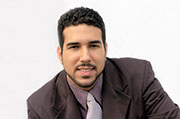- Skip Storing This Everyday Product in the Fridge Door
- Green Tea + B3 Pairing May Boost Brain Health
- Navigating Your Midlife Crisis: Embracing New Possibilities
- City Raccoons Showing Signs of Domestication
- Mapping the Exposome: Science Broadens Focus to Environmental Disease Triggers
- One Week Less on Social Media Linked to Better Mental Health
- Your Brain Changes in Stages as You Age, Study Finds
- Some Suicide Victims Show No Typical Warning Signs, Study Finds
- ByHeart Formula Faces Lawsuits After Babies Sickened With Botulism
- Switch to Vegan Diet Could Cut Your Greenhouse Gas Emissions in Half
Less Than Half of HIV-Positive U.S. Hispanics Are Getting Proper Care


Even though Hispanics in the United States become infected with HIV at rates triple those of whites, less than half of Hispanics with the virus are receiving adequate treatment, a new report finds.
The report, based on 2010 U.S. government health data, finds that while 80 percent of HIV-infected Hispanics do receive care soon after their diagnosis, only about 54 percent continue that care and only about 44 percent receive the virus-suppressing drugs they need to stay healthy.
The researchers, led by epidemiologist Zanetta Gant of the U.S. Centers for Disease Control and Prevention (CDC), also found that only 37 percent of the more than 172,000 HIV-positive Hispanic adults in the United States have the virus under control. HIV is the virus that causes AIDS.
The findings “underscore the need for enhanced linkage to care, retention in care, and viral suppression for Hispanics or Latinos,” Gant’s team writes in the Oct. 10 issue of the CDC journal Morbidity and Mortality Weekly Report.
Rates of care and viral suppression were similar for men and women and across age groups, the CDC team noted. But Hispanics who contracted HIV through the use of illicit, injected drugs had lower rates of care compared to other groups.
Why do Hispanics have low rates of HIV care? Gant’s team says many factors may be at play, including “lack of health insurance, language barriers, geographic differences, and migration patterns.”
The CDC says it has outreach programs in place to try to help Hispanic Americans determine their HIV status and get treatment if necessary.
“One such campaign is Reasons [Razones], which is the agency’s first national effort to encourage HIV testing among Latino gay and bisexual men, who comprise the majority of Hispanics or Latinos diagnosed with HIV,” the study authors said.
Encouraging needle-exchange programs might also help lower rates of infection among Hispanics who inject illicit drugs, the researchers said, and those programs “can also serve as gateways to care and treatment for HIV infection.”
The new findings come a week after another CDC report outlined poor rates of care among HIV-infected gay and bisexual American men. That study found that only 51 percent of these men were getting the HIV care they needed to keep the virus at bay.
More information
Find out more about HIV and HIV care at U.S. Department of Health and Human Services .
Source: HealthDay
Copyright © 2025 HealthDay. All rights reserved.










